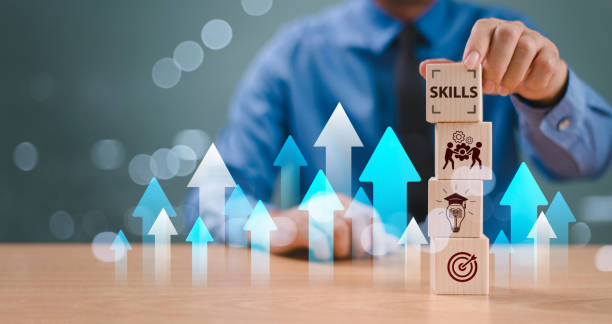According to the Royal Society for the Prevention of Accidents (RoSPA), more than 6,000 people will end up in hospital on Christmas Day and over the Christmas period more than 80,000 people visit A&E and these numbers appear to be rising. Not only is there an increase in admissions due to common winter illnesses, hospitals in the UK see thousands of people treated for Christmas-related injuries. Christmas sees injuries from knives, trips (e.g. from fairy light wires), food poisoning and burns. With serious incidents such as house fires also being more common than during other times in the year; People are 50% more likely to die in a house fire over Christmas than at any other time of year. Approximately 350 people a year are hurt by Christmas tree lights, according to RoSPA. Injuries include people falling while they’re putting them up, children swallowing the bulbs, and people getting electric shocks and burns from faulty lights. RoSPA’s advice is to ‘Test your lights and the wiring before you put them up, as they can deteriorate over the years. If you have old lights, buy new ones that meet higher safety standards, don’t overload sockets, as that’s a fire risk.’ – Since 1996, 31 people have died from watering their Christmas tree with the lights plugged in – 1 in 10 people burn themselves while setting fire to Christmas pudding – 350 people a year are hurt by Christmas tree lights – 1,000 people a year are hurt when decorating their homes – People are 50% more likely to be in a house fire at Christmas than at any other time of the year – Do not leave candles unattended (this advice should be followed throughout the year) – Ensure Christmas cards and wrapping paper are kept clear of open flames (e.g. do not hang cards above the fireplace and do not light candles near cards) – To reduce the risk of trips, slips and falls, keep holiday clutter to a minimum (e.g. invest in a cable tidy to keep stray wires minimal) – Watch out for small items that could cause a choking hazard, particularly in young children (e.g. Christmas cracker prizes) – Open packaging with scissors not knives to avoid careless injuries – If you have old Christmas lights, consider investing in new ones which will meet much higher safety standards – Keep the lights switched off until the Christmas tree is decorated and don’t let children play with the lights (some have swallowed the small bulbs) – Don’t overload sockets – Don’t let bulbs touch anything that can burn easily such as paper (this includes decorations) – Keep glass baubles out of reach of toddlers and pets – Don’t be tempted to leave the lights on when going to bed or when leaving the house – Follow the instructions on the turkey and don’t risk short cuts as it takes hours to cook a turkey thoroughly (uncooked turkey can cause salmonella poisoning, which can be life-threatening for vulnerable people) – Do NOT drink and drive! Take this advice on board to ensure that your Christmas is memorable for the right reasons. Have a lovely, safe Christmas and a very Happy New Year. If you have any other suggestions on ways to stay safe over Christmas, please Tweet us on @ajuda_training. To book yourself onto any of our valuable, life-changing courses (such as, First Aid, Health and Safety or Food Hygiene) in the New Year, please see our Course Calendar and use our new online booking system to book your place. To view our Christmas opening hours, please click on the picture below.

To put these risks into perspective, here are just a few Christmas accident statistics:
– 30 people die from food poisoning each ChristmasHere are some handy hints to keep your house safe:
Author: Dawn Evans
Front Line Manager Skills

Course Overview:
This Front Line Manager E-learning course starts by delving into the various roles that a front line manager is accountable for. You will explore how effective managers balance these responsibilities to create a productive work environment.
Furthermore, this E-Learning course goes in depth about the potential challenges that may arise when transitioning into a management position. Providing insight into overcoming common obstacles and adapting to new responsibilities with confidence.
You will explore the importance of planning and organization in management and will cover techniques to effectively manage time and resources, ensuring that projects are completed efficiently and goals are met successfully.
Moreover, you will learn about the skills involved in questioning, listening, and leadership. These skills are crucial for effective communication and team management, allowing managers to lead their teams with clarity and empathy.
And finally, strategies for effective problem-solving and conflict resolution are explained. This E-Learning course will provide tools to address and resolve conflicts in a constructive way.
Target Audience
This course is designed for employees who are developing into a management or supervisory position.
E-Learning Advantages
Online training is flexible, efficient and cost effective meaning the candidate can progress through the modules at their own pace and in their own time, so they can fit the training around their work and personal life.
Duration of the course
50 minutes
Modules
5
Cost
£49
SMART Objectives

Course Overview:
This micro online E-learning course explains what SMART objectives are and why they are important to employers and employees. Clear objectives help prioritise tasks, enabling employees to better manage their time and resources.
This E-learning SMART objective course is designed to teach you how to craft effective objectives that lead to tangible outcomes. It discusses why goals and objectives are vital, identifies common obstacles to achieving them and how to overcome these obstacles, explains what SMART objectives are and how to formulate them, and offers advice on setting objectives effectively.
Target Audience
Supervisors and managers who are responsible for performance review and objective setting along with staff who may want to understand why their objectives are structured in this way.
E-Learning Advantages
Online training is flexible, efficient and cost effective meaning the candidate can progress through the modules at their own pace and in their own time, so they can fit the training in around their work and personal life.
Duration of the course
15 minutes
Modules
1
Cost
£35
Implementing a Workplace Mental Health Policy Course Overview

Course Overview:
When people have good mental health, they are more likely to fulfill their potential. That means they enjoy work and cope easily with work situations. They have a happy family life and good social relationships.
This E-Learning Implementing a Workplace Mental Health Policy course, covers the steps that organisations should consider when developing and implementing a comprehensive workplace Mental Health Policy.
Target Audience
This course is aimed at employers and employees responsible for developing and following a workplace mental health policy.
E-Learning Advantages
Online training is flexible, efficient and cost effective meaning the candidate can progress through the modules at their own pace and in their own time, so they can fit the training around their work and personal life.
Duration of the course
10 minutes
Modules
1
Cost
£15
Instagram Marketing Strategies

Course Overview:
Our full suite of interactive video-based online courses can be white-labelled and distributed by you.
This E-Learning Instagram Working Strategies micro course, explores the essential elements of an effective marketing strategy to maximise the value of your Instagram account. The course also explains how to use hashtags to increase the reach of your account.
Target Audience
This course is aimed at anyone who is involved in promoting and marketing their business online. It provides insight into how Instagram can be used to promote the company as well as using brand identities, content strategies, hashtags and working with influencers.
E-Learning Advantages
Online training is flexible, efficient and cost effective meaning the candidate can progress through the modules at their own pace and in their own time, so they can fit the training around their work and personal life.
Duration of the course
10 minutes
Modules
1
Cost
Cyber Security – An Overview

Course Overview
Employees, managers and directors should all have a good understanding of the threat posed by cyber-attacks and the importance of guarding against data breaches.
This short online E-Learning course on Cyber Security will explain why cyber attacks and data breaches happen and provide practical advice on how to set up effective defences.
The E-learning course will identify potential ‘cyber threat actors’ who initiate cybercrime, along with looking at the main motivations behind cyber-attacks on individuals and organisations and why they target certain businesses.
Target Audience
This course is aimed at anyone who is involved in promoting and marketing their business online. It provides insight into how Instagram can be used to promote the company as well as using brand identities, content strategies, hashtags and working with influencers.
E-Learning Advantages
Training staff in cyber security is vital to protect your business from these ever present online threats.
Online training is flexible, efficient and cost effective meaning the candidate can progress through the modules at their own pace and in their own time, so they can fit the training in around their work and personal life.
Duration of the urse
15 minutes
Modules
1
Cost
£15
Facebook Advertising

Course Overview:
In this e-learning micro Facebook advertising course, we’ll examine effective ways to boost engagement – including how to define your target audience, choose the right ads for your audience and effective ways to design and build your ad content.
Finally, we’ll show you how to test, track and evaluate your ad campaigns using key metrics.
Target Audience
This course is aimed at anyone who is involved in promoting and marketing their business online.
E-Learning Advantages
Online training is flexible, efficient and cost effective meaning the candidate can progress through the modules at their own pace and in their own time, so they can fit the training around their work and personal life.
Duration of the course
10 minutes
Modules
1
Cost
£15
Team Development and Leadership

Course Overview:
Our full suite of interactive video-based online courses can be white-labelled and distributed by you.
This Leadership skills, Team Development and Leadership E-Learning course explains what a team is and discusses how it will grow and develop over time.
It talks about team members and behaviours that you will see within a team and It also then goes onto explain about the 5 stages of the Tuckman theory on group development. Finally it touches on leadership.
Team Development and Leadership Target Audience
This course is aimed at supervisors and managers that want to develop more effective relationships with members of their teams. The course can be a great starting point for people new to their leadership role as well as more established managers that want to enhance their skills. This acts as a great introduction to the subject.
Team Development and Leadership E-Learning Advantages
A strong leader will motivate their team, improving morale and efficiency and ensure that their team is of a common purpose.
Online training is flexible, efficient and cost effective meaning the candidate can progress through the modules at their own pace and in their own time, so they can fit the training around their work and personal life
Duration of the course
12 minutes
Modules
4
Cost
£15
Introduction to Generative AI

Course Overview:
Welcome to this course which starts by explaining what generative AI is, how it works, and why it’s such an impactful technology in today’s world.
It then moves on to explore the history and evolution of generative AI, seeing the innovations that, through time, have paved the way for today’s advancements in the field.
Next, the course covers the different types of generative AI models, detailing the various ways AI can generate new content, setting out the strengths and limitations of each approach.
Following this, the course showcases some incredible real-life examples of how generative AI is being used across different industries.
And finally, the course peeks into the future of generative AI, looking at emerging trends, as well as the ethical and societal implications posed by the technology.
Target Audience
This course is aimed at beginners and professionals from all industries who are curious about AI.
E-Learning Advantages
Online training is flexible, efficient and cost effective meaning the candidate can progress through the modules at their own pace and in their own time, so they can fit the training around their work and personal life.
Duration of the course
35 minutes
Cost
£35
Modules
5
Introduction to AI Prompt Engineering

Course Overview:
This short E-Learning course provides you with an introduction to AI prompts.
The Introduction to AI Prompt engineering E-Learning course starts by explaining what is meant by AI prompt engineering and its purpose, showcasing its value and importance across various sectors. The online Introduction to AI Prompt course looks at how AI has evolved over time, starting from the middle of last century, going right through to the present day, before introducing the area of Natural Language Processing and some of its key concepts.
After that, the E-Learning Introduction of AI prompt course covers the four key components which, when used together, create effective AI prompts, describes what you need to avoid when structuring a prompt, and provides examples of both good and bad prompts. The online Introduction to AI Prompts course then smoothly moves on to the area of prompt optimisation, which looks at why the refining of prompts is so important and details techniques that can be used in order to optimise your prompts.
Next, the E-Learning Introduction to AI Prompt online course turns to the importance of prompt evaluation, including what effective evaluation involves, and offers an insight into how AI prompt engineering is enhancing efficiency, accuracy, and user satisfaction across several sectors. The E-Learning Introduction to AI Prompt course then concludes with a look at emerging and future trends and technologies in the field.
Target Audience
The online Introduction to AI Prompts E-Learning course is aimed at all individuals who will be encountering AI in both work and personal projects. The course aims to help individuals to use AI effectively and efficiently, understanding how prompts can help make AI an effective tool.
E-Learning Advantages
Online training is flexible, efficient and cost effective meaning the candidate can progress through the modules at their own pace and in their own time, so they can fit the training around their work and personal life.
Duration of the course
45 Minutes
Modules
4
Cost
£35
Introduction to AI

Introduction to AI Course Overview:
This short online E-Learning course provides you with an introduction to AI.
The E-Learning Introduction to AI course starts by explaining what AI is and briefly describing its history.
After that, the online Introduction to AI E-Learning course explores the different types of AI, key concepts in the field, and how AI is being applied in real life across various sectors.
Next, the E-Learning Introduction to AI online course works through the entire AI development process, starting from the definition of the problem through to the deployment of the solution. This is then followed by a look at the various tools and technologies that power AI development.
Next, the online Introduction to AI E-Learning course covers the ethical implications and considerations in the field and finishes by looking into the potential future of AI.
Introduction to AI Target Audience
This online Introduction to AI E-Learning course is aimed at individuals who will be encountering AI in their daily lives, either via work or personal projects.
Introduction to AI E-Learning Advantages
Online training is flexible, efficient and cost effective meaning the candidate can progress through the modules at their own pace and in their own time, so they can fit the training around their work and personal life.
Duration of the course
30 minutes
Modules
8
Cost
£35
Developing a Workplace Mental Health Policy

Course Overview:
When people have good mental health, they are more likely to fulfil their potential. That means they enjoy work and cope easily with work situations. They have a happy family life and good social relationships. Organisations are required by law to promote and protect the mental well-being of their workforce.
A comprehensive Mental Health Policy, along with easy-to-understand operating procedures, will incorporate mental health issues into established organisational thinking. It will make sure everyone knows how the organisation views and deals with workplace mental health.
This online Developing a Workplace Mental Health Policy E-Learning course covers the steps that organisations should consider when developing and implementing a comprehensive workplace Mental Health Policy
Target Audience
This online Developing a Workplace Mental Health Policy course is aimed at employers and employees responsible for developing and following a workplace mental health policy and aimed at anyone responsible for risk assessment and health and safety in the workplace.
E-Learning Advantages
Online training is flexible, efficient and cost-effective, so candidates can progress through the modules at their own pace, in their own time, making it easy to fit the training around their work and personal life.
The Developing a Workplace Mental Health Policy E-Learning course is approved by leading industry bodies IIRSM and CPD.
Duration of the course
20 minutes
Cost
£35






